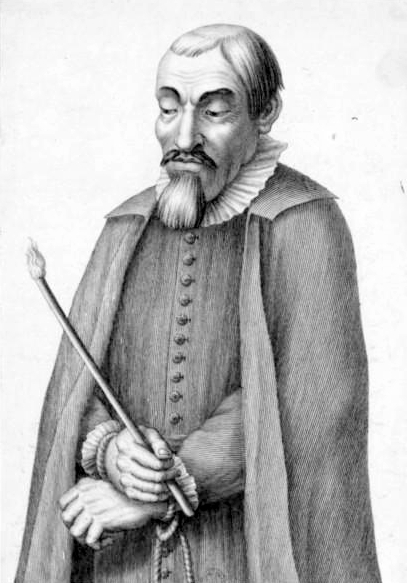 |
| Miguel de Molinos the originator of the Quietist movement |
Quietism refers to a Christian movement that was characterized by a mystic approach to God, consisting of an absolute passivity combined with a spiritual tranquility. It began in Spain and extended into Italy and France. Condemned as erroneous by various church leaders, it nevertheless had many adherents, including nobility in all three countries.
While there were other quietist movements and proponents throughout the centuries, the originator of the Quietist movement was a pious Spanish priest named Miguel de Molinos. Molinos was born in 1628 and grew up poor. His intellectual brilliance gained him admission to Jesuit schools, eventually earning a doctorate in theology.
Molinos was a popular preacher in Valencia and gained a following throughout Spain and Italy that included many future leaders. He radiated a confidence and spiritual authority that were combined with an expressed humility, declaring that “his one desire was to be annihilated for Jesus and condemned by all.”
In 1675, Molinos published a book titled Spiritual Guide to express his views. He wrote of the tranquility of the soul absorbed in God, dead to all other thoughts and feelings. One should have no desires, and even expressions of outward piety (devotion to Mary or the saints) were harmful.
This mystical, inward way was the way to life in God. Initially his book was positively received, in part because Pope Innocent XI and several cardinals were impressed with Molinos as a preacher and a godly man.
Molinos Arrested
In 1685, Molinos was arrested and put on trial by the Spanish Inquisition. Accused of heresy, he never protested against his accusers but rather agreed with them readily and quickly recanted all his errors (giving a certain ironical proof of his views that the inward soul was far more important than the outward). He was sentenced to imprisonment in a monastery in 1687 and spent the last nine years of his life in quiet prayer and contemplation.
By the time of Molinos’s arrest, his writings and views had spread to France. A French Barnabite priest named Father Lacombe had studied and popularized Molinos’s works and eventually met a wealthy French widow named Jeanne-Marie Guyon.
Madame Guyon had married young but almost immediately expressed regret that she had not become a nun. She was a voluble and intense individual, full of mystical experience, claiming to have been given an “invisible ring of mystical marriage” by the Child Jesus.
When Father Lacombe met Madame Guyon around 1680, the two began a spiritual journey that attracted many devout disciples, both men and women. For a time, both stayed in the French city of Thonon, where Madame Guyon lived at an Ursline convent.
Madame Guyon had a crisis in 1683 when she became convinced that she either was carrying the Child Jesus or was the pregnant woman referred to in the book of Revelation. This served only to intensify the circle of the devout. Eventually around 1685, the two traveled to Paris, where many noble women were added to the circle of their devotees.
When Molinos was arrested in Italy in 1685, the archbishop of Paris had Father Lacombe arrested as well on account of his “scandalous behavior.” While charges of misconduct against Lacombe were never conclusively proved, he spent the rest of his life in prison, by some accounts becoming increasingly insane.
Madame Guyon was also confined to a convent for a time but never repented of her views. She was eventually released through the influence of some of her noble friends. Around 1686, Madame Guyon met the young pious bishop François de Sali gride and de la Mothe Fénelon, who quickly became convinced of the genuineness of her spirituality.
Bishop Fénelon became a promoter of a less radical form of Quietism, one characterized more by indifference than the total passivity promoted by Molinos and Madame Guyon.
All was relatively quiet until the elderly Archbishop Bossuet, long a defender of the faith, was asked to look into the views of Lacombe and Guyon. Because of Guyon’s continued popularity with many members of the French court, she was never condemned publicly but rather agreed to retract her views.
In 1696, Bossuet sent a written work to Fénelon for his comment and approval. In it Bossuet condemned once again the views of Guyon. Rather than agreeing, Fénelon wrote and published a work of his own that defended the centrality of religious experience.
Some historians view the controversy as unnecessary, as the two theologians were not so far away from agreement. Nevertheless, the controversy boiled over, as Bossuet appealed to the king for justice against Fénelon, who refused to debate the elderly theologian.
Eventually Fénelon appealed to the pope in Rome, offending King Louis XIV, who, while unable to remove Fénelon from his office, forbad him to be present at the royal court. In 1699, under pressure from Rome, Fénelon repudiated his views.
After Madame Guyon’s death in 1717, Quietism itself slowly died away. Yet it left its mark on the church in France, Spain, and Italy, and later evangelical Protestants.
EmoticonEmoticon